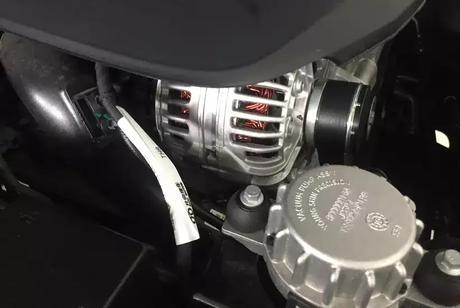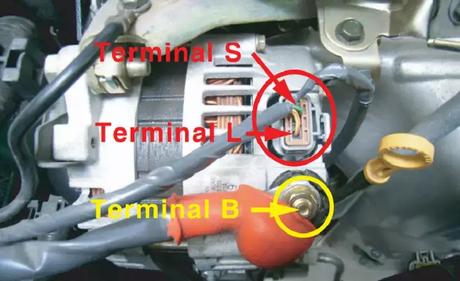
Charging system trouble diagnosis
Before conducting an alternator test, make sure that the battery is fully charged. A 30-volt voltmeter and suitable test probes are necessary for the test. The alternator can be checked easily by referring to the Inspection procedure below. Before starting, inspect the fusible link. Use a fully charged battery.
1) Verify the Symptom
Diagnose the charging system on the vehicle provides an answer to the question. Start the engine and check the charge warning light. Is the charge warning light ON?
With IC Regulator

(1) Turn the ignition switch to ON, observe the warning lamp, if the warning lamp is OFF. Disconnect connector(S, L) and ground L harness side
If the warning lamp is OFF. Check the following:
Warning lamp bulb
Fuse for warning lamp
If the warning lamp is ON Check the following:
Rotor coil Rotor slip ring Brush
The possible problem is a damaged IC regulator, replace the IC regulator.
2) Check Alternator Belt and Terminal S Fuse
Check the alternator belt tension before starting the engine. (Refer to your car Service Manual.) Check the fuse of terminal S. When the ignition switch is ON, measure the voltage at terminal S with the terminal S connector disconnected. If it is 12V, the fuse and the wire from the fuse to terminal S are normal.Start the engine, if The warning lamp is ON rev the engine to 1500 RPM. If the warning lamp turns OFF, then the system is OK.If the warning lamp is ON check the following:Drive beltFuse for S terminalConnector (terminals S and L) connection.
Observe the engine at idling condition If the warning lamp is OFF, then the system is OK.
If the warning lamp is ON
Rev the engine to 2500 RPM, measure terminal B voltage.
3) Check Alternator Output Voltage
The battery voltage is usually about 12V. To charge the battery, a higher voltage (about 13V to 15V) is required. If the output voltage is 13V or less, the battery continues discharging, thus the battery runs down.
Measure B terminal voltage, What is the output voltage at terminal B? If the voltage is 13V or less, the alternator output is NG. As it is OK when the alternator output is 13V to 15V, measure the voltage at the positive terminal of the battery. If the battery voltage is 13V or less, there is a malfunction at terminal B or the wire harness. Check the connection status.
If the voltage is more than 16V, then the IC regulator is damaged, replace the IC regulator
If the voltage is less than 13V Check the following:
Rotor coil
Rotor slip ring
Brush
Stator coil The possible problem is damage IC regulator or diode assembly, replace either of the parts.
